Humans can live with various parasites. Not only multicellular and protozoa, but also viruses, bacteria, fungi. They parasitize at the expense of the human body. Harmful microorganisms are not only in the intestines, but also in the muscles, blood and so on. You need to start fighting parasites as soon as possible. Otherwise, complications cannot be avoided.
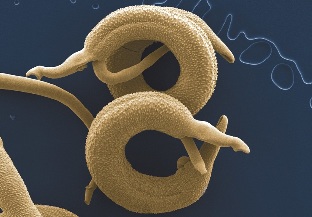
Types of parasites
There are many parasitic organisms that grow in the human body. All of them have specific features.
Round Worms
The group of roundworms or nematodes includes about 1, 000 subspecies. The most popular representatives are pinworm, Trichinella, toxocara, hookworm, nekator and ascaris. They enter the body through the mouth or skin. The main representatives of roundworms are described in the table.
| Parasite | Description |
| Pinworms | This is a round worm no more than 2-12 mm long. Women are generally older. These representatives are parasitized in the lower intestine and large intestine. Adult females lay eggs in the perianal region. Often such representatives are in children. When an itchy anus is scratched in the presence of such parasites, an egg falls into the patient's hand. Itching is one of the first symptoms. |
| Trichinella | Trichinella is a nematode. Pests enter the body with poorly processed meat. After entering the body, complete intoxication begins. In an advanced condition, parasites can be fatal in humans. |
| Toxocars | This parasite often lives in animals, including cattle. Young children are very sensitive to toxocariasis. The parasite multiplies extremely quickly, so treatment should be started immediately. |
| Hookworms | It is believed that every 4th person in the world is a carrier of this parasite. An adult can live in the body of the host for 8 years. With proper and timely treatment, 95% of 100 patients can be treated for hookworm. The parasite enters the body along with the contaminated soil. |
| Nekator | These representatives are small. Up to 2 cm long. Female pests lay up to 10, 000 eggs a day. The larvae of the parasites enter the environment together with the feces. |
| Ascaris | Roundworms can grow up to 35 cm in length, first the parasite develops in the small intestine and then spreads throughout the body. Individuals need to re-enter the body to reach sexual maturity. |
After the roundworms enter the human body, the development of pathological symptoms begins. The intestinal wall becomes inflamed, which disrupts the digestive system. Parasites in the body are a serious threat. They assimilate some nutrients.
ribbon ribbons
Tapeworms or cestodes present in the body cause cestodes. Adults are found only in the intestines. Larvae are able to spread throughout the body. A person can be infected with the following tapeworms:
- Wide band. This is the longest helminth in the world. It can grow up to 15-17 meters. Wide tape worms cause serious damage to the human body. Ulcers form at the site of closure.
- Bull tapeworm. This is another major parasite that adversely affects human health. It occurs most often in the small intestine. Infection occurs when eating thermally poorly processed contaminated meat.
- The pig tied the ribbon. The length of the tape can grow up to several meters. Pests are carried by wild and domestic pigs.
- Echinococcus. The egg enters the environment together with the fecal matter. Infection often occurs when personal hygiene rules are not followed.
- Alveococcus. The length of the parasite grows up to 2. 2 mm. Infection occurs with food contaminated with contaminated feces.
The pathology manifests itself primarily in disorders of the gastrointestinal tract. Nerve dysfunction occurs. A person's well-being is constantly deteriorating.
Fluke Worms
Flukes are flatworms. These are one of the most dangerous representatives. Almost all fluxes parasitize the owner's body. Property changes only at a certain stage of development.
Changing a homeowner eliminates a large number of people in the homeowner's body. The most common representatives of the fluks are:
- Siberian wing. Infection occurs when eating fish that has undergone adequate heat treatment. The eggs of this pest are in human feces. The length of the parasite grows up to 13 mm. The body is almost completely transparent.
- Hepatic hemorrhage. A parasite capable of infecting both animals and humans. An adult grows up to a maximum of 8 cm. Infection is possible with the use of contaminated plants, where the flea is already in the intermediate form. There is also a risk of water pollution.
- Schistosome. If left untreated, a schistosome can cause sudden death. Only 6 types of this parasite are dangerous to humans. The microorganism can be located in the blood vessels and bladder. Infection often occurs while swimming in fresh water.
- Clonorhis. People who work in public catering are susceptible to infection. Clones are most common in men over 35 years of age. They are at risk. The parasite's eggs are excreted in the feces.
Parasites often enter the body when eating raw or undercooked fish. Another common choice is to include poorly washed vegetables and fruits in the diet.
Trematodes
This is a type of flatworm. Their main feature is the presence of suction cups. Trematodes include:
- Opisthorchiasis. The source of infection is raw or undercooked fish. The symptoms are nonspecific, so it is difficult to diagnose the disease. The result is the most unpleasant.
- Fascioliasis. The infection damages the liver and bile system. A characteristic symptom of human infection is a sharp rise in body temperature to 39-40 degrees.
- Dichroseliosis. Helminthiasis with lanceolate fluke. With pathology, the liver and gallbladder are additionally damaged.
The parasite is widespread throughout the world and poses a serious threat to livestock and humans.
Protozoa
The simplest parasites are single-celled pests. Some of the delegates are the oldest inhabitants of the world. Parasites successfully adapt to new structures and multiply due to their simple structures. The pest can live both on the skin and directly on the human body.
The movement of single-celled organisms can be carried out with the help of eyelashes, flags, false legs. These types of parasites include:
- Flagged. They have an oval or pear-shaped body. The main difference is the presence of flagella. Their number can be 1-8. The parasite absorbs food from all over the body. Infection can occur as a result of insect bites, violation of personal hygiene, as well as sexual activity.
- Sporovikov. They can live in different human organs. Feeding, respiration, release of waste is carried out by the entire surface of the pest's body.
- Infusorium. These are ciliary or sucking parasites. They live in fresh water and soil.
- Sarcode. The parasite consists of one cell. Some types of sarcoids can live on human teeth if hygiene is not appropriate.
Single-celled organisms cause malaria, amebiasis, giardiasis, etc. can cause a number of dangerous diseases, including. Infection is possible through contact-house, fecal-oral, contaminated products, as well as the method of infection.
Protozoan - infections that occur in humans as a result of the activity of protozoan microorganisms. Animals are also susceptible to pathologies. Among the pathologies they create are fungal infections.
In most cases, protozoan organisms come to humans from animals. In addition, their access is possible from water, land and man to man.
Ectoparasites
Ectoparasites are parasites that live on the surface and external organs of the body. They can be a provocateur of skin diseases. In addition, ectoparasites carry various infections.
The group of ectoparasites includes:
- Lice. It is a blood-sucking parasite. The mouth easily pierces human skin. If necessary, lice can continue to fast for several days. Lice can be body and head lice. Lice are a serious threat because they can tolerate infectious diseases.
- Bloch. These are temporary ectoparasites. Passed from man to animal and back. Worries about severe bites.
- Ixodid ticks. Unlike other ectoparasites, ticks are easy to get rid of. Vegetable oil or paraffin is used for this purpose. The main thing is to take the removed tick for examination. This will help make sure it is not infected
Ectoparasites are often transmitted to animals, but human infections, such as ticks or lice, are also possible. Pests feed on blood. They have a high rate of reproduction.
Helminths
Currently, experts identify 280 species of worms. All of them can live and develop in the human body. It is a mistake to think that helminthiasis occurs only in people from low-income families. Worms can occur even in wealthy people who follow their hygiene carefully.
Helminths can be infected in many ways. Parasites can come in contact with animals, humans, and contaminated soil. Worms are often seen in children. This is due to non-compliance with preventive measures.
The first symptoms may not appear immediately. It may appear after 2-3 days or a few weeks. It all depends on which parasites enter the body directly. Helminthiasis can be both acute and chronic.
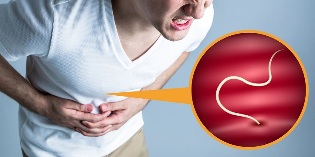
Classification of parasites
All parasites are divided into species.
There are large groups by- method of infection;
- place method;
- biological features.
Each group has its own characteristics.
By type of localization
Distinguish temporary, stationary and transit forms of localization. In the first case, the parasite lives in the host's body only at a certain stage of development. Pests in a stationary form are always in the human body. The transient form is the period during which the parasite migrates to its habitat.
When treating, doctors always take into account not only the form of the parasite, but also its location. In general, pests are divided into 2 main categories. Parasites that live on the skin are called ectoparasites. Pests inhabiting the host are endoparasites.
Internal parasites, in turn, are divided into 2 categories - tissue parasites and parasites of the abdominal organs. There are also atypical forms. In this situation, the pests are located in places unusual for them.

External parasites can be temporary or permanent. Those who feed on blood with bites are temporary. They can cause infection. The rest of the parasites disrupt the integrity of the skin.
There are also intracellular pests. These include, for example, Plasmodium malaria.
By method of infection
Parasites can also be classified according to the mode of infection. The following methods of penetration are distinguished:
- Contact and home. In this case, the parasites penetrate as a result of violation of sanitary and hygienic standards.
- fecal-oral. In this case, the infection occurs through dirty hands and poor quality products.
- Transmission parts. Infection occurs through blood-sucking insects.
- Active paths. This is the name of a method of infection in which parasites reach their owners during the larval stage.
Thanks to the large number of access roads, you can infect parasites everywhere. Only preventive measures can reduce the risk of infection.
Due to its biological properties
According to their biological characteristics, parasites are divided into two categories - unicellular and multicellular. The first group includes sporozoans, ciliates, flagella, histological amoebae. The main method of infection is to ignore the rules of personal hygiene.
Worms, insects, arachnids are generally called multicellular parasites. For example, the danger of infection with helminths is that the worms damage the tissues and internal organs.
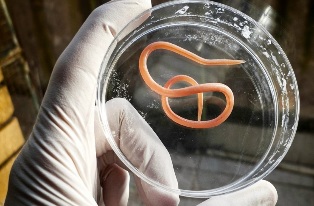
The most common multicellular parasites are worms.
Multicellular parasites are more dangerous. They differ in the rate of rapid reproduction and complex life cycle.
Location of parasites
Some parasites can live in certain parts of the body, while others can spread to all parts of the body. Parasitic infection is difficult to diagnose.
Roundworms live mainly in the digestive system. Infection occurs when eating unwashed food.
Parasites are found under human skin. These representatives include the bond. The pest enters the body when drinking raw water. Tourists going on vacation to countries with high traffic are often infected.
Internal organs are infected by the liver. They can live in the liver, pancreas, intestines, bile ducts. The main source of infection is the use of raw fish.
There are also tissue microorganisms. They can live in the spinal cord, muscles and connective tissues. The main source of infection is pets.
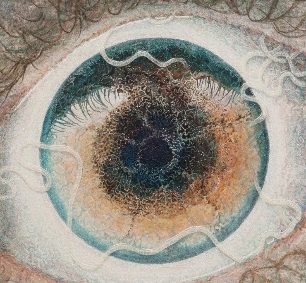
There are also eye parasites. They can be round, straight, ringed, barbed-headed. The main source of infection is poor heat treatment of fish or contact with infected animals.
Danger of parasitic infection for humans
Any parasitic infection requires urgent treatment. The sooner treatment is started, the faster the pests will be able to be controlled and the fewer complications will occur.
Parasites in the human body can cause serious pathologies:
- Some pests cause the development of acute colitis. If the patient has an ulcer, the situation is much worse. There may be blood in the stool, which is dangerous for the development of anemia. Treatment should be started as soon as possible.
- Parasites can be located in the brain or liver. This condition can be dangerous not only for health but also for the patient's life. There is a risk of developing a cyst when infected.
- Pests living in the intestines can damage its integrity. In addition, there is a risk of blockage.
- Parasites cause a significant blow to the human immune system. Destruction of leukocytes and erythrocytes occurs. It affects the overall well-being of a person almost immediately.
- Pests take food from the human body. Increased risk of developing thyroid disease, anemia. In addition, the condition of the hair follicles and nail plates deteriorates.
- The body is poisoned by toxic components. Parasite waste is toxic to humans. The more of these, the worse a person's well-being. The risk of developing allergies, asthma and asthma attacks increases.
Parasites are especially dangerous for children. The infection turns into a number of unpleasant symptoms. The child loses appetite, loses weight, develops apathy and fatigue. Your baby may cry often and be anxious. Dark circles appear under the eyes.
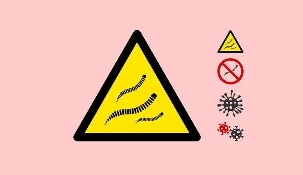
The baby is growing, so it is important to get enough food. This is not possible with parasites in the body. The baby's condition is rapidly deteriorating every day. The child may be seriously delayed in development.
The danger of parasites is that a person can live for months and years without feeling anything. During this period, it will significantly weaken and face malnutrition. Possible complete exhaustion. Only timely treatment can help prevent this.
Factors causing infection
People are often to blame for the appearance of worms. There are a number of factors that increase the likelihood of pests. These include:
- Refuse to wash hands before eating;
- infection with dirty shoes;
- ignoring the signs of worms in pets;
- drink raw water;
- eating unwashed fruits and vegetables;
- weak heat treatment of meat and fish;
- eat often outside;
- Weakening of the immune system after taking strong drugs.
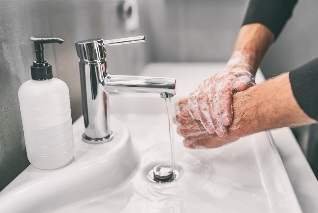
Eggs of parasites first enter the intestines. They then enter the bloodstream and the larvae travel throughout the body.
Parasites are most prevalent in the largest groups of children. This is due to disregard for hygiene rules and very close contact.
Symptoms of parasites in the human body
It is important to know that sometimes parasites do not show up for a long time. Symptoms are usually general and almost invisible at first.
The first signs of parasites in the body are rapid and unreasonable weight loss, as well as itching in the anus. The presence of parasitic infections can be checked only by diagnosis. Symptoms of infection often include various disorders of the nervous system and general weakness of the body.
A person with a parasite suffers from vitamin deficiency. This contributes to fatigue, drowsiness and persistent apathy.
If pests live in the intestines, problems with the digestive system are inevitable. Diarrhea may be an alternative to constipation. There is an increased risk of flatulence and pain in the right hypochondrium.

When there are parasites, human protective functions are reduced. There is a risk of various infectious diseases due to weak immunity.
One of the most obvious signs of parasites is the spontaneous appearance of allergy symptoms. In addition, allergic rhinitis or persistent dry cough may begin to bother you.
Diagnosis of helminthiasis
Only after the diagnosis and confirmation of the presence of worms can their treatment be continued. Doctors use different diagnostic methods to make sure there are no parasites:
- Macroscopic. For him, the patient's stool is taken for analysis. A microscope or magnifier is used as additional equipment. This method is used in search of pinworms or ascaris.
- Microscopic. For this, a thick smear is obtained on a special membrane, which is further examined.
- Immunology. In this case, the blood is looking for antibodies against a particular type of helminth. This method is used to look for a large number of different parasites.
- Biopsy. The presence of worms is determined by examining muscle tissue.
- Instrumental. Such methods are used to determine how much internal organs and tissues are damaged by parasites. These methods include ultrasound, X-ray, computed tomography.
Treatment of parasite invasion
You can choose both medicinal and folk remedies to eliminate parasites. It is best to combine them. In this case, the effectiveness of therapy will be the most pronounced and rapid.
Treatment is selected individually. The most effective therapy is selected by the doctor, taking into account all the features available in a particular patient.
Folk remedies against parasites in the human body
Traditional treatments are no less effective than drugs. Their main advantage is the complete safety of the patient.
One of the best medicines is garlic juice. Contains phytoncidesThey destroy pests in the body. The juice is taken three times a day. Start with 5 drops a day. The dosage is gradually increased.
Another effective remedy is wormwood tincture. Like garlic, it contains phytoncides. To prepare the drug, mix 1 tablespoon of wormwood with 100 ml of alcohol. The drug is insisted for a week in a dark place. Take 20 drops 3 times a day. Tincture is used 20 minutes before meals.
It is good to add a lot of carrots to your diet and drink fruit juice. Harmful to parasites. It is recommended to take 1 glass of fresh carrot juice 30 minutes before meals.
Herbal mixtures have a great effect on the body. Mix 1 tablespoon each to prepare an anti-parasite medicine. tansy, wormwood, maple bark. All components are poured into a glass of water and brought to a boil. Remove after cooling. Drink broth 3 times a day, 125 ml before meals.
The main disadvantage of traditional therapy is that some components cause an allergic reaction in case of intolerance to specific components. In this case, you should reconsider your therapy and find a decoction or tincture that does not contain allergens.

However, it is enough to reconsider your diet to fight a small number of parasites. You need to enter in the menu:
- pumpkin seeds;
- raw fruits and vegetables;
- coconut and pineapple;
- chili;
- garlic;
- various vegetable oils.
All these products have a negative effect on the activity of parasites.
Medicine for parasites
The drug is more effective. The main thing is to take all medications deliberately. It is important to know that they are strong, so their use is possible only after prior consultation with your doctor.
Self-medication with worms is strictly prohibited. There is a risk that the patient will worsen his or her well-being by using the wrong medications that are only required in a particular situation.
Prevention of parasites in the human body
Preventing the growth of parasitic microorganisms is easier than fighting them in the future. Everyone must follow the existing security measures. It is recommended for this:
- Use only purified water to wash and drink food;
- Do not use other people's personal hygiene products; To give animals medicines against parasites for the prevention of
- ;
- Stop eating dirty fruits and vegetables;
- Stop eating raw fish.
Periodic diagnostics are required to ensure the absence of harmful microorganisms. If preventive measures are taken, the risk of infection is minimal. It is especially important to make sure that children follow the recommendations. They are in the main risk group.




























